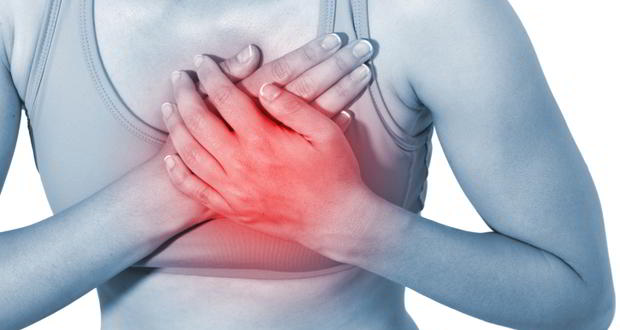Improve your well-being and boost longevity with the Blue Zones diet
12/15/2022 / By Zoey Sky

Health-conscious people constantly aim to improve their overall well-being and longevity. According to an expert, one diet may be key to this goal: the Blue Zones diet.
This diet, founded by longevity expert Dan Buettner, has been linked to populations with better cardiovascular, metabolic and overall health outcomes.
Blue Zones are the world’s longevity hotspots
According to Buettner, the Blue Zone regions are the world’s “longevity hotspots.”
There are five Blue Zones in the world: Loma Linda, California; Nicoya, Costa Rica; Ikaria, Greece; Sardinia, Italy; and Okinawa, Japan. These five regions have a high concentration of people who live to be over 100 years old.
After researching these regions, Buettner found that the diets and lifestyle practices of people from different countries shared some unique similarities.
Loma Linda
Seventh-day Adventists in Loma Linda are “extremely religious and follow a mostly vegan diet.” They avoid dairy, spices, shellfish and all meats.
Nicoya
Nicoya is a Costa Rican region that includes more starches and grains such as beans, corn and squash compared to other Blue Zones.
People in this area consume a lot of vegetables like carrots, peppers and tomatoes and some fruits that are local to where they live like bananas, oranges and papaya. People from the area have an earlier, smaller dinner.
They also treat grains like corn with lime, which boosts the bioavailability of the nutrients.
Ikaria
In Ikaria, people follow a more plant-based version of the Mediterranean diet. They eat more legumes and heart-healthy fats.
They also drink alcohol, but only in moderation.
Sardinia
In Sardinia, the typical diet includes a lot of beans, vegetables, fruits and whole grains.
The local diet includes heart-healthy monounsaturated fats from olive oil and a very small amount of meat. They also consume dairy like goat and sheep milk, which are usually easier to digest.
Okinawa
Okinawa is a region in Ryukyu Islands in southern part of Japan. The Okinawa diet has more fish, soy and vegetables compared to the diets of the other Blue Zones.
In this area, people focus on starches low on the glycemic index, like rice and sweet potato, which make up 67 percent of their diet. They eat pork, but only for rare ceremonial occasions and in small amounts.
Okinawans also follow a principle called ikigai or “purpose,” which gives them reasons to wake up in the morning.
12 Elements of the Blue Zones diet
The Blue Zones Diet is based on the eating patterns followed in the Blue Zones.
Regardless of the region each Blue Zone is in, they include the following in their diet:
Plants
People in the Blue Zones follow a mostly plant-based diet that includes lots of fruits, vegetables, fiber-rich whole grains, nuts, beans and seeds. While not totally plant-based, at least 95 percent of the foods in these diets come from a plant or a plant product. (Related: Health and nutrition: Study links eating a plant-based diet to lower risk of diabetes.)
Healthy fats
Those in Blue Zones consume healthy fats like olive oil, nuts and seeds. Many people eat a handful or two of nuts almost every day.
Dark leafy greens
Dark, leafy greens like kale, spinach and Swiss chard are also an important part of the Blue Zones diet.
Beans
Data has revealed that people from Blue Zones consume at least one cup of beans daily.
Fish
Fish is part of the Blue Zones diet but people usually consume no more than three ounces of fish daily.
Data suggests that, on average, fish is on the menu only two to three times a week.
Eggs
Eggs are also eaten in the diets of all five Blue Zones, but they are only consumed an average of two to four times every week.
Dairy
Cow’s milk, dairy and yogurt aren’t as popular. Instead, people consume goat’s and sheep’s milk products, especially in the Ikarian and Sardinian Blue Zones.
Whole grains
Bread is a staple in Blue Zone regions and it is eaten almost daily.
But instead of processed bread, those in the five zones favor whole grain or sourdough varieties. They also eat other whole grains for most meals, like barley, brown rice or oats.
Limited meat intake
Meat is part of the Blue Zones diet but only two ounces of chicken, pork and other meats are eaten about five times per month.
No processed foods
The Blue Zone diet focuses on a lot of whole foods that are minimally processed. This means people eat mostly foods found in nature, and nothing processed in a factory.
Minimal added sugar
Sweets are usually only eaten during celebrations, and they otherwise don’t consume a lot of added sugar on a daily basis.
Moderate alcohol intake
Alcohol is part of the diet, but people usually limit themselves to one to two glasses of red wine per day.
Experts think alcohol offers certain benefits that may come from resveratrol, an antioxidant found in red wine. Other superfoods like berries, cocoa, grapes and peanuts also contain resveratrol.
Benefits of the Blue Zones diet
Like other balanced diets, the Blue Zones diet offers many benefits. People in these regions focus on more whole, natural foods instead of processed items often eaten in Western diets.
The Blue Zones also prioritize other factors that contribute to a healthy lifestyle, like strong relationships, quality sleep and physical activity.
Shifting to a Blue Zone diet may offer these benefits:
Longevity
Research suggests that people who follow the diet and stick to it live long, healthy lives up to their 90s and even 100s.
Improved heart and brain health
A study on the Blue Zone diet has shown that people who follow it, as opposed to the Standard American diet, found that they “experienced better cardiovascular health outcomes and cognitive function.”
Boosts mental health
Your physical health is often linked to your mental health and overall mood.
Data also suggests that eating more high-quality whole foods is better for your mental state.
Promotes healthy weight management
The Blue Zones diet is ideal for anyone who wants to maintain a healthy weight because it encourages people to eat only until they are 80 percent full, which can help discourage overeating and unhealthy snacking.
Increases nutrient intake
If you’re tired of feeling sluggish because of all the processed foods that you eat, try the Blue Zone Diet to boost your intake of vitamins and minerals.
Things to consider before switching to the Blue Zones diet
While the Blue Zones diet is considered beneficial, one major critique is that many people think it means they have to be mostly vegetarian to be healthy.
While the diet includes a lot of plant-based foods, it also includes a bit of high-quality fish, poultry and meat.
Here are other critiques of the Blue Zone diet:
It’s not recommended if you are sensitive to carbs
The diet includes beans, legumes and whole grains, which are carbs.
If you are glucose-sensitive, too many carbs could be bad for your hormones and blood sugar levels.
It can be hard to maintain if you don’t cook all your meals
If you eat out, you risk eating items that aren’t part of the diet.
The Blue Zones diet isn’t sustainable if you don’t cook all your meals.
It can be hard to get all your proteins from plants
Going strictly vegan means you may have trouble getting all your proteins from plant-based foods.
And while you can get all your protein from plants, United States Department of Agriculture guidelines suggest 0.8 grams of protein for one pound of body weight.
Unless you’re being very intentional about your proteins, such as consuming more beans and legumes and fewer starches, you might not be getting enough. If this is an issue, you can address it by being more intentional when choosing your meals.
If you want to improve your lifestyle habits and boost your longevity, start shifting to the Blue Zones diet.
And if you can’t give up on meat completely, making changes to your current diet by eating more whole foods, limiting your meat intake and avoiding processed foods can help you live longer.
Watch the video below to know more about different diets that can help you maintain a healthy weight.
This video is from the Holistic Herbalist channel on Brighteon.com.
More related stories:
Dairy products can increase the risk of cancer, but these plant-based diets can REDUCE it.
Shirataki noodles, a low-carb and low-GI superfood perfect for vegans.
Sources include:
Submit a correction >>
Tagged Under:
aging secrets, Blue Zones diet, brain health, fasting, food is medicine, food science, health science, heart health, longevity, mental health, natural health, natural medicine, nutrition, organics, plant-based diet, weight management
This article may contain statements that reflect the opinion of the author
RECENT NEWS & ARTICLES
ReverseHeartDisease.News is a fact-based public education website published by Reverse Heart Disease News Features, LLC.
All content copyright © 2018 by Reverse Heart Disease News Features, LLC.
Contact Us with Tips or Corrections
All trademarks, registered trademarks and servicemarks mentioned on this site are the property of their respective owners.




















